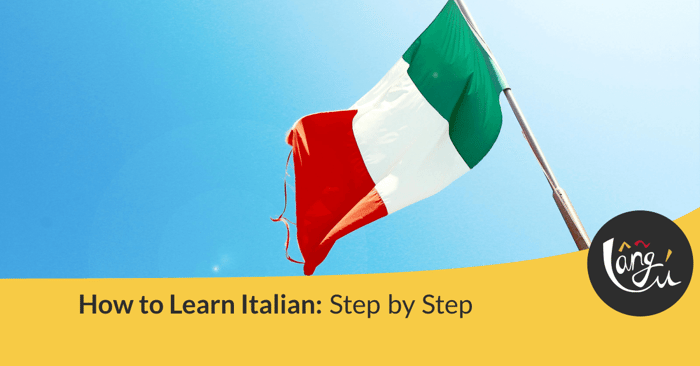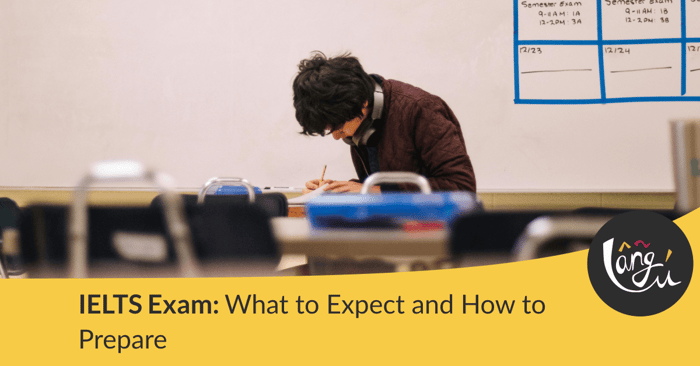Learning a new language can feel overwhelming at first. With Italian, however, you’re in for a rewarding ride. It’s a language full of rhythm, emotion, and history, and it opens doors to rich culture, delicious cuisine, and beautiful travel destinations. If you're wondering how to learn Italian in a way that actually works, this step-by-step guide will show you the smartest path forward—without wasting time on ineffective methods.
Step 1: Set a Clear Goal
Before diving into vocabulary lists or grammar books, take a moment to define why you want to learn Italian. Are you preparing for a trip? Do you want to connect with Italian relatives? Or are you planning to live in Italy one day? Knowing your "why" helps you stay focused and choose the right learning tools.
Set a measurable goal. Instead of saying “I want to speak Italian,” try something like “I want to hold a 10-minute conversation in Italian within three months.” That gives you a clear target to work toward.
Step 2: Start With the Basics
When figuring out how to learn Italian, don’t skip the fundamentals. Understanding the core structure of the language is key if you want long-term success with how to learn Italian.
Begin with:
The Italian alphabet and pronunciation rules
Basic grammar: subject-verb agreement, present tense, articles, and common prepositions
Essential vocabulary: greetings, numbers, days of the week, family terms, common verbs
Use beginner resources like Duolingo, Babbel, or Memrise to get started. These apps make it easy to absorb new material in small chunks.
Also, start listening to Italian from day one. Even if you don’t understand much at first, your brain will begin to recognize patterns. Try Italian songs, beginner podcasts, or YouTube channels like “Learn Italian with Lucrezia.”
Step 3: Practice Speaking Early
A lot of learners make the mistake of waiting too long to speak. Don’t. The sooner you start talking, the faster you’ll progress.
You don’t need to be fluent to start speaking. Even with 50–100 words, you can begin forming simple sentences. Use language exchange apps like Tandem or HelloTalk to connect with native speakers.
Better yet, book sessions with a professional tutor. A teacher will correct your mistakes, push you to improve, and help you avoid bad habits. Speaking regularly with a tutor is one of the fastest ways to learn any language.
Step 4: Immerse Yourself in the Language
If you want to master how to learn Italian, think of it less like a subject in school and more like a lifestyle. The more you surround yourself with the language, the faster it will stick.
Here’s how to create an Italian-friendly environment:
Change your phone and social media language to Italian
Watch Italian movies or Netflix shows with Italian subtitles
Follow Italian creators on Instagram, TikTok, or YouTube
Listen to Italian radio or Spotify playlists
Read children’s books, comic books, or news articles in Italian
Don’t worry about understanding every word. Focus on recognizing familiar words and picking up new ones through context. Over time, your comprehension will grow.
Step 5: Build a Consistent Study Routine
Success in language learning doesn’t come from occasional bursts of effort—it comes from consistency. Aim for daily exposure, even if it’s just 15–20 minutes.
Here’s a sample weekly routine:
Monday: Study vocabulary (flashcards + example sentences)
Tuesday: Grammar drills and exercises
Wednesday: Speaking practice with a tutor
Thursday: Watch an Italian video or listen to a podcast
Friday: Writing exercise (journal entry, email, or short story)
Saturday: Review and quiz yourself
Sunday: Rest or optional conversation session
Use spaced repetition tools like Anki to make vocabulary stick. And keep a notebook or digital journal of new words and expressions you learn.
Step 6: Learn Grammar Without Obsessing Over It
Italian grammar can be intimidating—there are verb conjugations, gendered nouns, and lots of tenses. But don’t get stuck memorizing endless rules.
Instead, learn grammar in context. Pay attention to how phrases are used in real-life conversations or writing. Focus on high-frequency structures first, like:
Present tense verbs (parlare, mangiare, essere, avere)
Articles (il, la, lo, un, una)
Common prepositions (di, a, da, con, su)
Use mistakes as learning opportunities. The goal isn’t perfection—it’s progress.
Step 7: Practice Writing
Writing helps you internalize grammar and vocabulary better than passive reading or listening. Start simple. Write a few sentences each day about your life, your plans, or your opinions.
You can also try these writing activities:
Keep a daily Italian journal
Write short stories using new vocabulary
Send messages to language exchange partners
Summarize an Italian video or article you watched
If possible, get feedback from a tutor or native speaker. This will help you avoid fossilizing errors.
Step 8: Don’t Be Afraid to Make Mistakes
One of the biggest barriers in language learning is fear—fear of saying something wrong, looking foolish, or misunderstanding someone. But mistakes are essential. Every error you make is a chance to improve.
Keep the mindset of a learner. Celebrate progress, no matter how small. Trust the process and give yourself time to grow.
Step 9: Level Up Your Listening and Reading
As you get more comfortable with the basics, start increasing the difficulty of what you consume. Try reading Italian blogs, short novels, or even social media comments. For listening, explore podcasts like "ItalianPod101" or "Coffee Break Italian."
Shadowing is a great technique: listen to a native speaker and try to repeat what they say in real-time. It boosts pronunciation, rhythm, and fluency.
Step 10: Work With a Tutor for Faster Results
If you're serious about learning Italian, nothing beats working with a qualified teacher. A tutor can:
Personalize lessons to your goals
Identify and fix problem areas
Help you practice real-life conversation
Keep you motivated and accountable
Platforms like Langu make it easy to find experienced Italian tutors for online lessons. You can book flexible sessions based on your schedule and level.
Conclusion- how to learn Italian
There’s no magic formula for mastering a language overnight, but if you’re wondering how to learn Italian effectively, the answer is clear: start small, be consistent, and stay curious. Use a mix of input, output, and real interaction. Embrace mistakes and enjoy the process.
Whether you’re just beginning or want to take your skills to the next level, the smartest move you can make is to learn with a professional. Book a lesson with a native-speaking Italian tutor today at Langu and start speaking with confidence. Buona fortuna!
Native-speaking Italian tutors
FAQs
How to learn Italian quickly and effectively?
Be consistent, practice speaking with a tutor, immerse yourself in Italian media, and use tools like flashcards and grammar exercises daily.
Do I need a tutor to learn Italian fluently?
While self-study helps, working with a tutor speeds up progress, improves accuracy, and gives you real conversation practice in Italian.
What is the best way to start learning Italian as a beginner?
Start with the basics: pronunciation, essential vocabulary, and simple grammar. Use apps, listen to native speakers, and begin speaking early.




